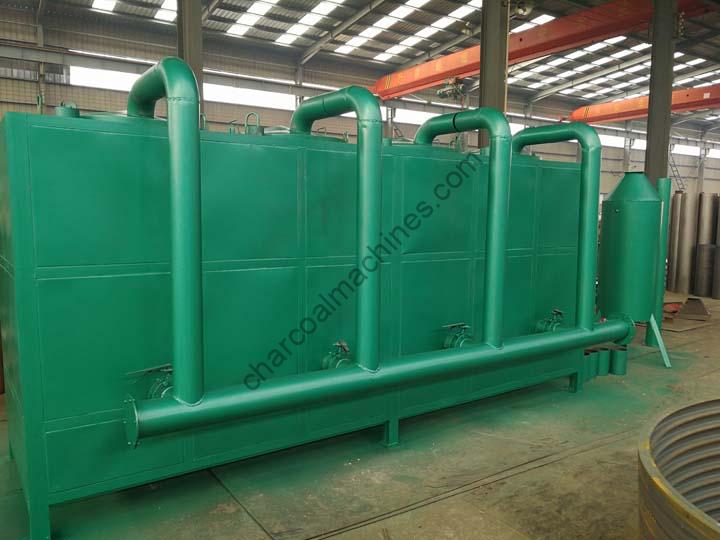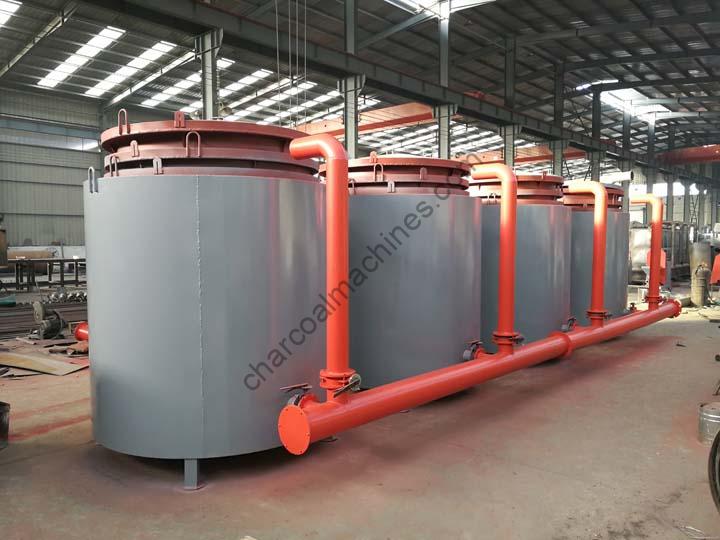How to make charcoal with the airflow hoisting carbonization furnace step by step?
The airflow hoisting carbonization furnace is composed of the movable outer stove, inner stove, airflow pipes, ignition port, hoisting equipment, and the flue gas purification equipment. The inner stove is independent so that the charcoal furnace can be a single inner stove, three inner stoves, and four inner stoves. The carbonization inner stoves are connected by pipes, and the combustible gas in the carbonization process can burn each inner furnace which has high working efficiency and can save fuel consumption.

The details of the process for making charcoal by the airflow hoisting carbonization furnace:
Stage 1: drying process
After placing the inner stove which is of the biomass rods in the charcoal furnace, to ignite at the ignition port below the furnace, and the temperature in the furnace is gradually heated from normal temperature to about 100 °C. Because the temperature inside the furnace before ignition is low, this process should be heated with a large fire, reaching 100 degrees to the left, and then use a small fire to heat the carbonization temperature to 170 ° C – 200 ° C or so.
Stage 2: pyrolysis process
When the temperature in the carbonization furnace reaches 170 ° C – 200 ° C, use a simmer to heat the furnace temperature to about 340 ° C. The second phase takes about 2 hours and 30 minutes.

Stage 3: rapid pyrolysis process
When the temperature in the furnace reaches about 340 °C, use a small fire to heat the furnace temperature from 340 °C to 380 °C – 400 °C. The third phase takes about 2 hours.
Stage 4: the end of carbonization
When the temperature in the furnace reached about 400 ° C, there was no significant temperature change thereafter. Use a small fire to heat up, when the smoke output from the smoke outlet is significantly reduced and lightened, the flame is extinguished and the carbonization is over. The fourth phase takes about 40 minutes.
Stage 5: Charcoal cooling and discharging process
After the carbonization is completed, if no other cooling measures are taken, the fire can be sealed and the charcoal can be naturally cooled. There are two ways to seal fires: Method 1: seal the smoke outlet and cool the charcoal, and the surface of the charcoal briquettes is good. This method takes about 16 hours to cool down the charcoal. Method 2: completely open the smoke outlet and cool the charcoal. This process is the same as method 1, but the charcoal surface is not shiny like the former. This method takes about 16 hours for cooling. In these two ways, when the temperature in the furnace drops to about 40°C, to discharge the charcoal is ideal.
Charcoal production equipment for sale

Note: If there is no temperature measuring device or temperature measuring device damaged in the airflow hoisting carbonization furnace, the small-fire firing in the carbonization process shall take 7-8 hours. It is strictly forbidden to use a large fire during the carbonization process. At the end of carbonization, when the amount of smoke from the outlet is significantly reduced and the smoke is light, the flame should be extinguished and the carbonization is over.

No Comments.